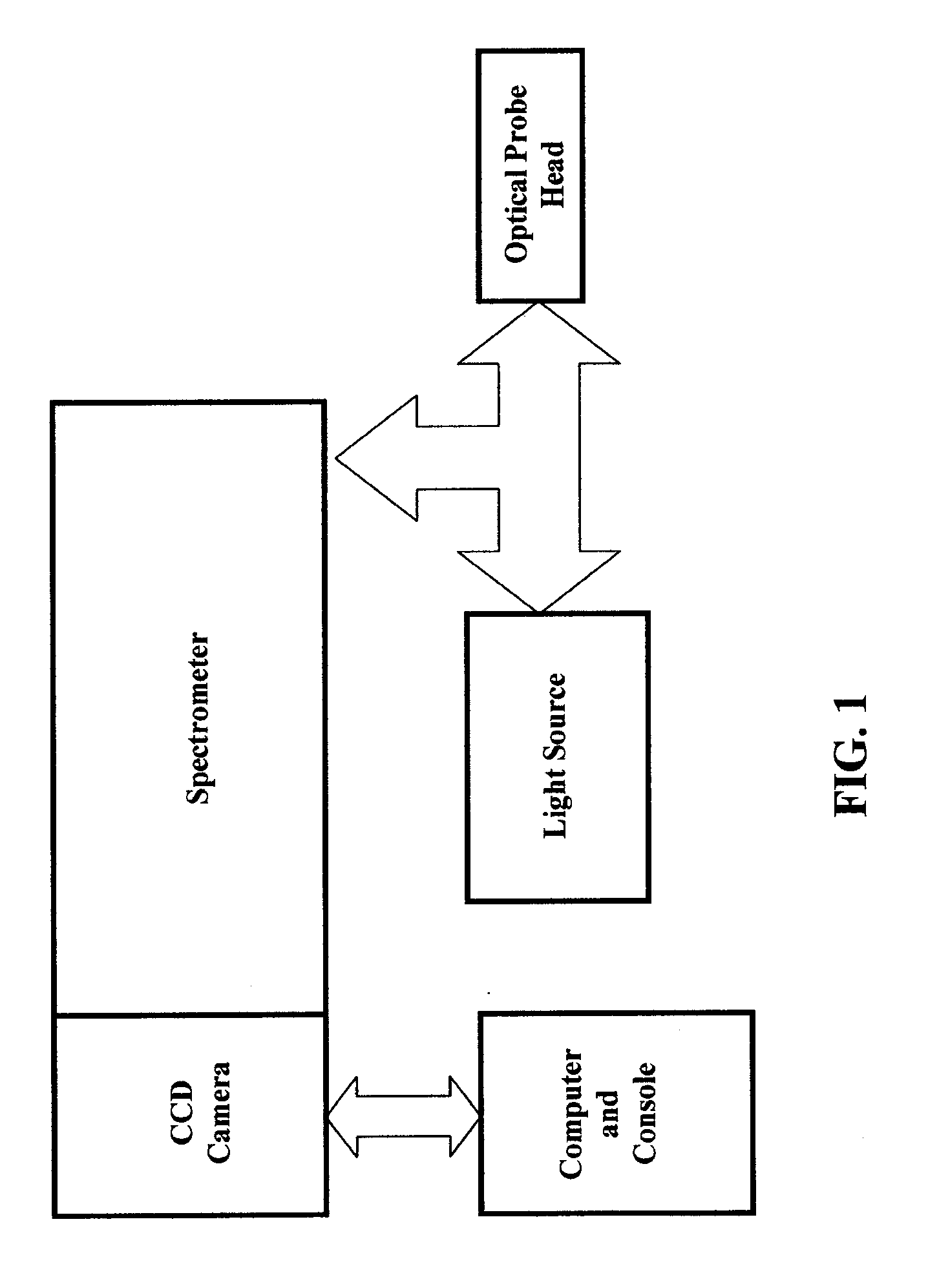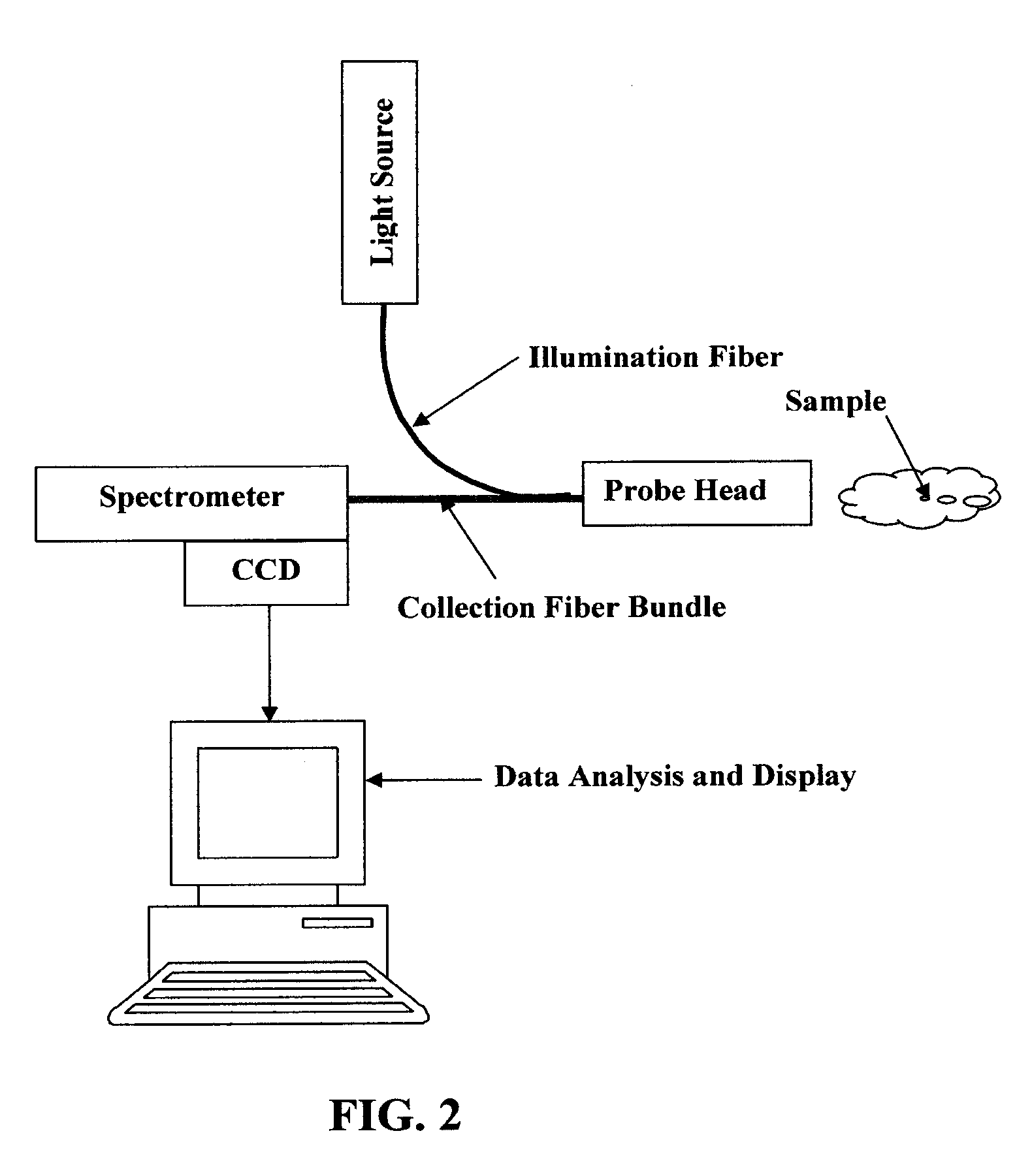Methods for optical identification and characterization of abnormal tissue and cells
a tissue and cell technology, applied in the direction of optical radiation measurement, diagnostics using spectroscopy, instruments, etc., can solve the problems of less sensitive, electrical impedance techniques, and relatively poor spatial resolution
- Summary
- Abstract
- Description
- Claims
- Application Information
AI Technical Summary
Benefits of technology
Problems solved by technology
Method used
Image
Examples
example 1
Detection of Breast Cancer In Vitro
[0045]The optical device can be used to detect suspect areas of tissue during a lumpectomy. Once the surgeon excises the suspect breast tissue, either the surgeon, a pathologist, or lab technician in the operating room can use the handheld device as shown in FIG. 3 to investigate if the margins of the tissue are free of malignant tissue, the steps of which are shown in the FIG. 8. The user approaches the tissue with the handheld device and delivers electromagnetic radiation to the tissue at the desired location. The user than uses the device to detect and measure the electromagnetic radiation scattered by the suspected areas of tissue. A reference signal specific to the patient is collected from a clear benign portion of the tissue and the results of the benign tissue response are compared to the measurements obtained from the suspect portions of the sample. If it is determined that the suspect tissue is malignant tissue, the surgeon can follow up ...
example 3
Detection of Breast Cancer In Vivo
[0046]The optical device can also be used to detect cancerous tissue in vivo during a lumpectomy. During the lumpectomy, the surgeon will use the probe in the body cavity of the patient to assess if, once the suspect tissue has been excised, the remaining tissue in the breast is free of malignancy. Once the excision procedure is complete, the surgeon will use the device inside the body to scan the surface of the cavity. The results obtained from a benign tissue sample will be registered to form a baseline for the patient tissue response and the results from the suspect areas will be compared with the benign values. The console will display the variations in the tissue response. If the spectrum of scattered radiation from the sample varies from the spectrum from a benign sample, the surgeon will then note the area and will excise more tissue at the margins to ensure complete excision of the cancerous tissue before closing the patient.
example 4
Sentinel and Lymph Node Detection and Excision
[0047]As part of a typical cancer excision surgery the surgeons sometime excise sentinel lymph nodes and additional nodal areas to determine whether the cancer has metastasized. The optical probe can be used in vivo, to make sure that the node is cancer free before excising it. Additionally the device can be used in-vitro to find out if more lymph nodes need to be excised before the patient is closed.
PUM
 Login to View More
Login to View More Abstract
Description
Claims
Application Information
 Login to View More
Login to View More - R&D
- Intellectual Property
- Life Sciences
- Materials
- Tech Scout
- Unparalleled Data Quality
- Higher Quality Content
- 60% Fewer Hallucinations
Browse by: Latest US Patents, China's latest patents, Technical Efficacy Thesaurus, Application Domain, Technology Topic, Popular Technical Reports.
© 2025 PatSnap. All rights reserved.Legal|Privacy policy|Modern Slavery Act Transparency Statement|Sitemap|About US| Contact US: help@patsnap.com



